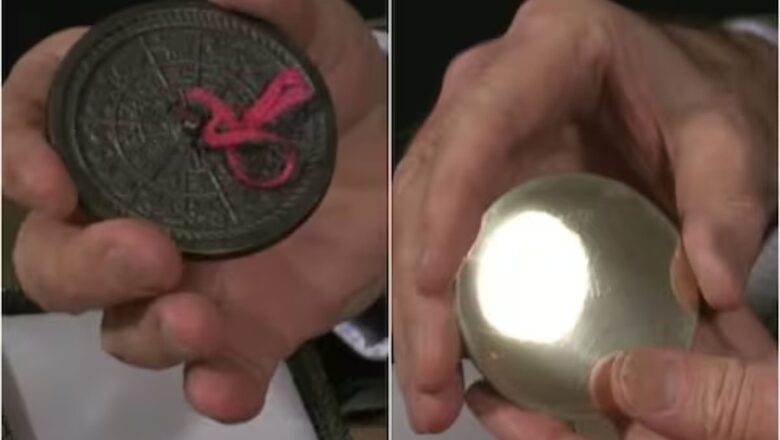
views
For over a millennium, a peculiar Chinese artefact has perplexed researchers—the ‘t’ou kuang ching’ or ‘Magical Mirror.’ Crafted from polished bronze with intricate brass designs on its back, this mirror, known as the ‘Light Transmitting Mirror,’ unfolds a fascinating history rooted in ancient China.
The design intricacy of these magical mirrors is a marvel. The bronze mirrors boast a polished front, presenting an ordinary reflective surface. It is the back, adorned with brass designs, that conceals the magic. A recent YouTube video by Grand Illusions showcasing these mirrors has impressed audiences worldwide. The clip, revealing the enchanting transformation when light illuminates the shiny surface, has swiftly gone viral, amassing 439,394 views.
The magic unfolds when light shines on the mirror’s reflective side, projecting the reflected light onto a decorated surface at the back. The hidden pattern mysteriously emerges on this surface, rendering the solid bronze mirror seemingly transparent.
The art of crafting these mirrors dates back to the Han dynasty (206 BC–24 AD), with the secret preserved until at least the 8th and 9th centuries. Unfortunately, a book titled ‘Records of Ancient Mirrors,’ containing the mirror-making secret is now lost.
By the 11th century, these mirrors had become an enigma, even to the Chinese. Shen Kuo, a polymath and politician of that era, detailed the mirrors in his book ‘The Dream Pool Essays.’ He speculated that the ancestors possessed a unique art. According to Shen Kuo, during the glass moulding process, the raised part of the design at the back became thicker as the thin part cooled first. Despite the design being on the back, faint lines on the shiny surface, nearly imperceptible to the naked eye, enhanced the mystery.
Numerous theories attempt to unravel the mirror’s secret, delving into principles of light reflection, refraction, and construction.
The prevailing theory suggests that fine lines on the back of the mirror create a pattern on its reflective surface when illuminated. Scholars, echoing Shen Kuo, propose that a combination of casting and polishing methods forms these intricate lines.
An alternative theory posits that heating the polished mirror causes thin layers to expand, becoming slightly convex. This alteration scatters light in these areas, forming an image. Rapid cooling in water then preserves these changes.













Comments
0 comment